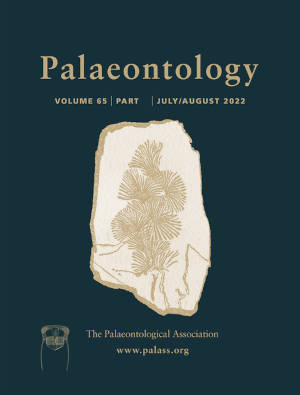Article: Climate, competition, and the rise of mosasauroid ecomorphological disparity
Publication: Palaeontology
Volume:
65
Part:
2
Publication Date:
2022
Article number:
e12590
Author(s):
Samuel R. R. Cross, Benjamin C. Moon, Thomas L. Stubbs, Emily J. Rayfield, and Michael J. Benton
Abstract
Abstract Mosasauroidea, prominent marine lizards (Squamata, Toxicofera) of the final 30 million years of the Cretaceous, have been extensively studied for their morphology, ecology and systematics in the past two centuries. However, the relative roles of biological and physical processes as drivers of their morphological diversification remain uncertain. Here we investigate the macroevolution of mosasauroid feeding and locomotory disparity using continuous characters measured from the mandible and forelimb as proxies. Patterns of morphospace occupation demonstrate important roles for innovation and niche partitioning in driving morphological disparity. The early evolution of Mosasauroidea is characterized by large shifts in morphology, especially elongation of the mandibular biting area and hydropedality. The later diversification of derived Mosasaurinae and Plioplatecarpinae is associated with a great expansion of morphospace, attributed to the acquisition of novel feeding and locomotory strategies. Temporally, disparity follows a top-heavy profile, possibly reflecting opportunism in the wake of the Cenomanian–Turonian anoxic event. The highest levels of disparity are found in the latest Cretaceous, associated with the radiation of derived mosasaurids alongside the persistence of more basal forms. Major morphological innovations are not associated with evolutionary rate shifts, which differentiates them from earlier marine reptiles, and may reflect constant and greater niche occupation in Late Cretaceous oceans. Linear modelling of potential physical drivers indicates a minor role for these processes, suggesting that biological drivers were the primary sculptors of mosasauroid morphological disparity.
